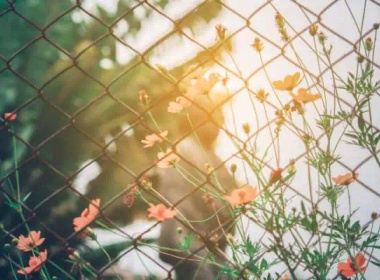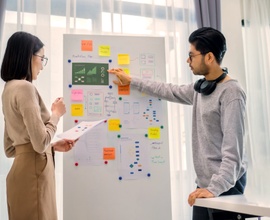What is Internal Linking? Best Practices and Strategy
What is internal linking?
An internal link points to another page on the same website. Technically speaking, that means an internal link’s source domain and target domain are the same.
Why is internal linking important?
From a UX perspective, internal linking is important because it...
- Helps users navigate the website and find interrelated content
- Keeps users browsing on the website instead of exiting after the first page visit
- Directs users to the next step in the buyer’s journey
From an SEO perspective, internal linking is important because it...
- Defines website architecture and information hierarchy
- Typically, the most authoritative pages on a website will be linked to most often.
- Distributes page authority and ranking power evenly throughout the website
- Internal links pass link authority from the source to the target URL. If a source URL has a high SEO authority, internal links from that source URL will pass on a percentage of that authority to the target URL.
- Helps you rank for target keywords
- The anchor text of an internal link sends a strong signal to search engines that the target URL is topically relevant to users searching for that anchor text.
- Helps differentiate two topically similar pages
- For example, search engines might have trouble detecting the topical difference between a market and a neighborhood. However, an internal link with optimized anchor text can help search engines understand this difference and rank the pages accordingly.
All of these elements work together to optimize the website for both users and crawlersCrawlers
A crawler is a program used by search engines to collect data from the internet.
Learn more, which helps improve the website’s overall SEO performance.
Best practices for internal linking
Optimize anchor text for your primary keyword target
Identify the primary keywordKeyword
A keyword is what users write into a search engine when they want to find something specific.
Learn more target you want the destination URL to rank for, and use that keyword (or a slight variation of that keyword) as the anchor textAnchor Text
An anchor text is the text displayed on a website for a given link.
Learn more.
Link deep in your website hierarchy
In general, you want to avoid links to your top-level pages (typically those in the main navigation or footer), since those pages are already the targets of sitewide internal linksInternal links
Hyperlinks that link to subpages within a domain are described as "internal links". With internal links the linking power of the homepage can be better distributed across directories. Also, search engines and users can find content more easily.
Learn more. For effective internal linking, it’s best practice to link to pages deep within your website architecture.
Internal links should read naturally and not be overly optimized
Don’t keyword stuff your anchor text, and when possible, mix up your anchor text — it can be helpful to use variations of your primary keyword target.
Link to the most relevant piece of content
If there’s a piece of content that topically overlaps with the source context, then link to that page.
Use rel=follow links
Follow links ensure that SEO authority flows freely amongst the pages of your website.
Use a reasonable number of internal links per page
There’s no set number of internal links you should have on each page, so use your best judgment. Typically, you’ll want to have 3-4 internal links in a long-form piece of content.
Use static HTML absolute URLs
Links in un-parseable Javascript, Flash, Java, or other plugins are typically inaccessible by crawlers, and therefore ineffective when trying to use internal linking for SEO. Instead, use static <a href > links. Absolute URLs are also more useful than relative URLs (e.g. www.example.com/page instead of /page), because they ensure that search engines pass link authority to the correct URL in the preferred URL format.

Common internal linking issues/opportunities
Orphaned pages
Both users and crawlers rely on internal links to find the other pages of your website. So if a page is not linked to from any other pages on your site, it can’t be found by crawlers, which means it can’t be indexed or ranked. This makes it an orphaned page — a page that exists by itself, and can only be found by those who know its exact URL address. As far as Google is concerned, orphaned pages don’t exist.
Broken internal links
Internal links that point to 404 pages not only keep 404 pages in the index, but also pass SEO authority to dead pages.
Internal links that redirect
Studies have shown that when a URL redirects from Page A to Page B, a small percentage of SEO authority is lost in the redirect. In addition, redirects add an extra step for servers, which may affect page speed. To maximize the value of an internal link, the target URL should be the final destination URL that resolves to a 200 status code.
Links pointing to pages blocked from search engines
Internal links help crawlers crawl, and thus index, pages on your website — don’t create internal links that point to URLs you don’t want indexed.







